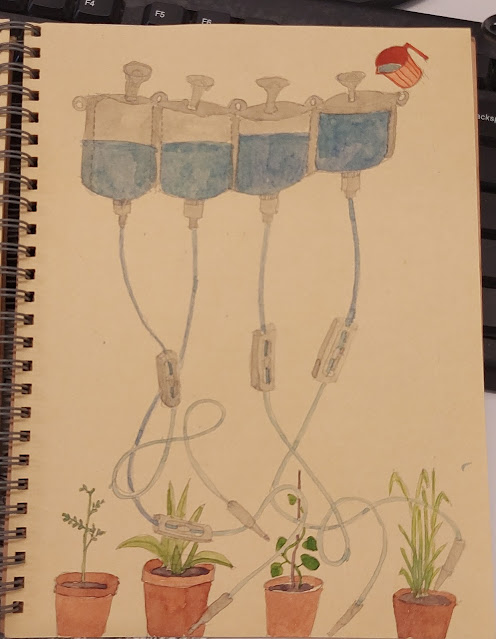The frequency bar graph of any music system displays a graph of the different aspects of music on a two dimensional Cartesian grid where the amount of frequencies of different tones are measured. While this can be an empirical measure of sound, the experience of the entirety of music is certainly not so isolated. That means, we do not experience music in its constituent individual tones, rather it is a holistic multidimensional one; where the streams of rounds create a complete environment affecting one physical as well as emotional senses at the same time. Thus using the frequency bar graphs of soundscapes that appear on digital screens offer an accurate measure of tones, but don't give us an accurate method or measure of experience. I therefore find it quite redundant as a tool to use in order to make something tangible from music into architecture.
The way in which music translates into space needs to be investigated through the framework of the musician. A musician, - a vocalist, instrumentalist or any such virtuoso is consciously striking specific chords in order to create a space in the mind of his / her audience, or creating a particular kind of environment for the listener. In this, he / she is also perceiving certain qualities of the environment, in quite an abstract fashion, and for his own practice of making music for the audience. In this, The musician has quite subconsciously articulated a method to work out space into music and further deploy it too. This particular method needs to be learnt by the architect.
In quite direct terms, music has the obvious highs and lows, the adjectives of three dimensional space that come to define certain characteristics of music. Such adjectives offer the most ready means for music to be interpreted as spatial. In terms of a phenomenological experience for the performer, it means (For a vocalist) Singing in head voice for higher note, while from the belly for a lower note. The high and lows in the standard upright position & balance of the body then, are quite literally, but also pragmatically up and down in the body respectively. In terms / for the listener, it either creates a mood of excitement, charging up the body to swing and more with the performer or make oneself sombre, melancholic through the low notes. There is ample theory on how moods are actually created by a selection of sharp and flat notes (for Indian classical music) and then through movements of through notes, in both, Indian and Western Classical music. One thing, that has to be rather. specified in that while curtain association with certain kinds of music or forces are already established for us in both the above music systems, I constantly like to challenge them in terms of feeling what it actually does to me as against the expected or prescribed effect. However, this can also be a factor that may be left up to the subjectivity of the listener. For example, the association of stately Western classical music or Baroque music is a matter of association, or I wonder if one genuinely can understand It to belong only to that context. Similarly certain ragas sung in certain time periods may purely be a historic experience.
In our detached, isolated and mobile environment that we listen to music today, one wonders how these historic associations work themselves out. In history, listening to music (and therefore the production to space) must certainly not have been an individualistic affair. Then comes the idea of volume, depths and perspective - all that closely relate to architecture and space there characteristics are definitely more about technique of using notes.
The question finally is, what essentially do we represent when we are understanding music in order to translate into architecture? Is it the literal redistribution of particles that are visible on digital pads, is it the bar sheet on which notations for music are written? Or is it the rhythmic changes in tones and melodies through subjective experiences that are shown on paper? In all three, the understanding of music is merely visual. But what does it mean for architecture? Do we then assume that in architecture, the experience of music can only be usual? Or is there a way to actually create a space which induces a musical feeling?
These are incomplete ongoing long term thoughts.





































